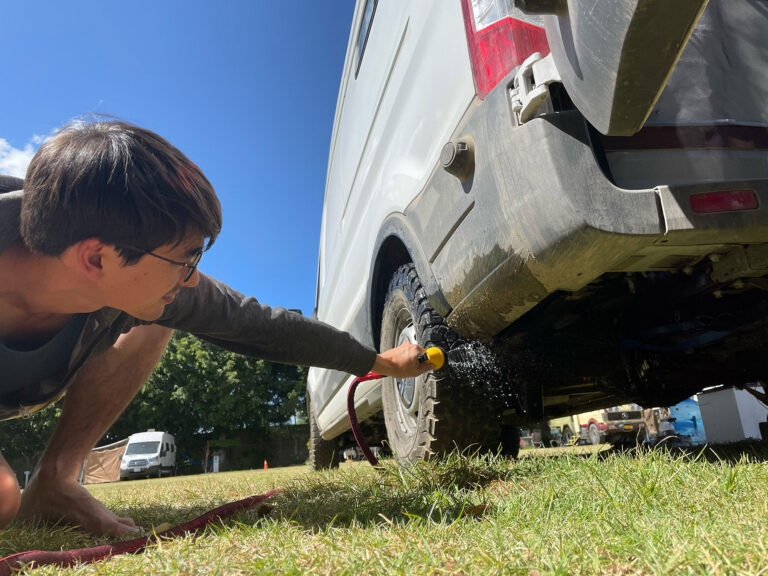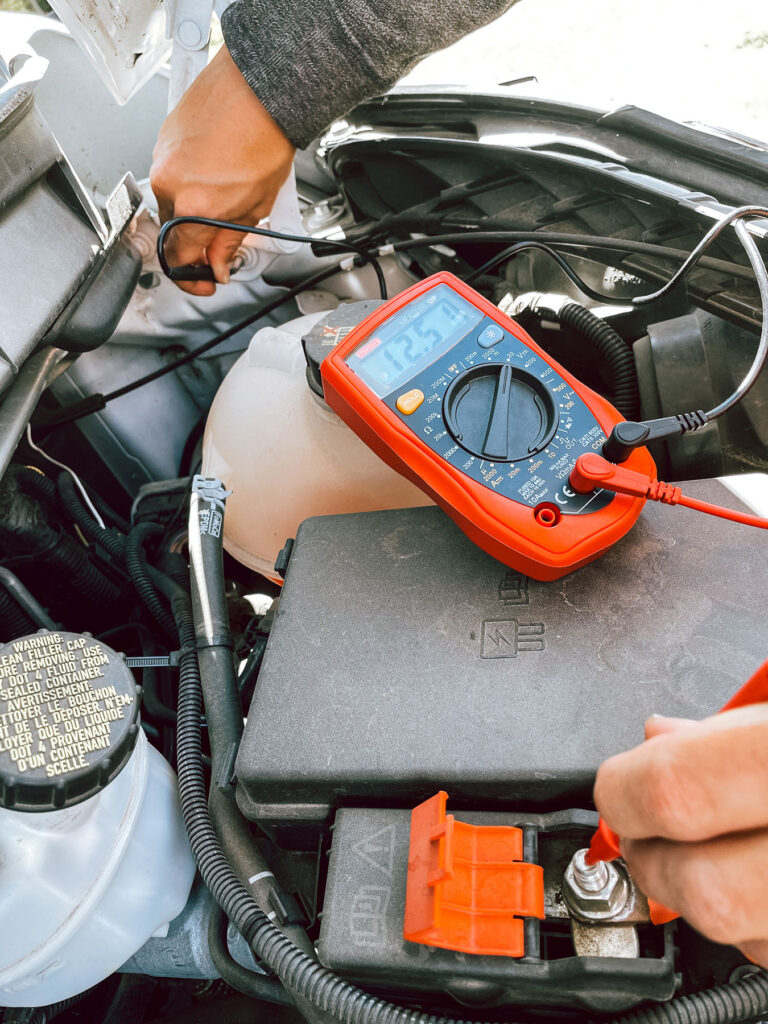
As the winter season swings into full gear, RV owners are taking steps to store their vehicles in a way that preserves their travel home and reduces the chance of expensive maintenance repairs come springtime. It might not seem obvious, but having a vehicle sit unused for months is detrimental to the health of the RV. Batteries get depleted, mold can start to grow, and rust can take hold.
So, in this post, we go over five major areas to plan for when you’re ready to place your camper in storage. Taking care of these issues now ensures you’ll be ready for future adventures when the next season arrives.
Let’s get started!
1. Don’t Forget To Wash Your RV’s Exterior
Washing the outside of your RV is an important first step to ensure your vehicle is well-maintained and ready to go once springtime comes around. Throughout your travels, dirt and salt tend to build up on your RV’s exterior and chassis. This is especially true if you often drive on dirt roads and park along the coastlines for extended periods of time.
All the gunk that builds up on your camper should be washed off before the vehicle is stored. If not, you risk damaging the paint on your RV, scratches forming on the windows, and rust building up along the vehicle’s chassis.
To properly wash your vehicle, we recommend using an auto-specific detergent and washing cloth. We like this particular microfiber mitt because its extended handle makes it easy to clean larger RVs. And don’t forget about wiping down your camper’s roof. Since the roof is often out of sight, it’s easy for it to be out of mind, too!
2. Don’t Forget To Remove All Foods And Vacuum Out Dust
Cleaning out the inside of your RV is just as important as washing the exterior. If you forget to clear out the camper’s interior, you risk uninvited rodents (e.g., rats, roaches, and ants) entering your vehicle. These critters can cause significant damage to the RV’s interior by chewing up wires, upholstery, and insulation. And this can lead to expensive repairs once you’re ready to remove the RV from storage.
First, we recommend removing all food-related items from the vehicle. Everything has to go. This includes all basic cereals, liquids, canned goods, and spices. You don’t want any remaining food smells that attract these animals while the vehicle sits alone in storage.
Second, use a car vacuum to thoroughly clean every surface in your RV. This includes the floor, inside the cabinets, and even the front cab. We like this particular vacuum because it comes with different head attachments to help you reach small, hard-to-access areas to ensure you remove as much dirt and dust as possible.
Additional Tip: Remove all the upholstery and bring it back to your home to wash. This also allows the inside cushions to dry, which reduces the chance of mold growth.
3. Don’t Forget To Drain Your Plumbing Pipes
Emptying your RV’s water system of all liquids is important before storing your RV. You don’t want musty smells, mildew, and other gross gunk building up along the inner lining of your plumbing components. Mold and mildew are incredibly difficult to remove once they grow, and it’s much easier to take preventative actions than to replace the whole system.
Draining your pipes is also mission-critical if you will be parking your RV during sub-zero temperatures. This is because water expands when it turns to ice, and if the water in the pipes freezes, you risk these pipes bursting. Again, it’s much easier and faster to drain the pipes than replace them, if they break, come springtime.
Cleaning and draining your water tanks is also important to prevent mold and mildew from forming inside. You don’t want harmful organic materials growing inside your fresh water tank that will eventually hold the water you depend on for drinking, food preparation, and dishwashing.
If you need a step-by-step tank cleaning guide.
4. Don’t Forget To Disconnect Your Auxilliary Battery
We recommend disconnecting the battery from your RV’s electrical system to keep your leisure battery well-maintained and healthy. This prevents parasitic draws from draining the battery and shortening its lifespan. If you’re unsure how to do this, look for a big master switch that should be connected near the battery’s positive terminal. Turning the switch to the off position should be enough to disconnect the battery from the loads.
If you use lead-acid batteries (i.e., AGM), we recommend keeping them hooked up to a charger throughout the winter to keep them consistently charged at 100%. You can do this by using a cheap trickle charger. Batteries will self-discharge over time, and you don’t want your leisure batteries discharging so much that it harms their overall lifespan.

5. Don’t Forget To Cover Your RV (If Outside)
If you plan to store your camper outside, investing in an RV cover is smart to protect the exterior from rain, snow, UV light, and other debris. The roof is one of the most vulnerable parts of an RV. Because many fixtures are installed on the roof, water leaks through the roof are always a very real possibility. (We’ve seen plenty of roof leaks in other vehicles throughout our years of travel).
Exposure to UV light is one of the natural elements we are most worried about. Over time, UV rays can make silicone sealant brittle and crack. This is the sealant you (or your RV manufacturer) used to seal around your ventilation fan, air conditioner, solar panel brackets, and other rooftop installations to prevent water from seaping inside the vehicle. If the sealant starts to deteriorate, the material loses its waterproof properties and exposes the inside of your RV to leaks.
On A Budget? Use a simple tarp to tie over your RV. It doesn’t have to look fancy; it just needs to protect the roof from water and UV light.
Conclusion
Preparing your RV for long-term storage is an essential step every RV owner must undertake. Your RV is a “home away from home,” and it makes sense to do everything you can to take care of it and maintain it. And like any normal home, if an RV is not properly maintained, it starts to break down and can be costly to repair.
If you have any questions or concerns regarding RV storage, please feel free to contact us at the email address provided below. We’re always happy to help and provide advice.
Happy travels!
How To Contact Us
For more campervan living & building tips, check out our blog: www.asobolife.com.
Or for more on our current Pan-American road trip to Argentina visit us on Instagram: @asobolife.






